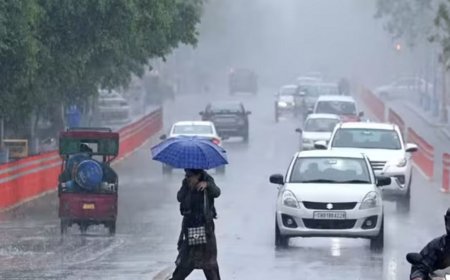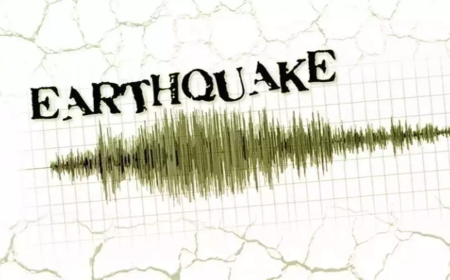What Security Measures Are Taken When a Flight Receives a Bomb Threat?
When an airline receives a bomb threat, it triggers a complex sequence of security measures and protocols designed to protect passengers and crew. In this detailed guide, we’ll break down what happens when a bomb threat is received, how authorities respond, and the steps taken to ensure safety. Discover the security procedures involved and what passengers should know in case of such threats.

What Security Measures Are Taken When a Flight Receives a Bomb Threat?
When a bomb threat is made against an aircraft, the situation demands immediate and highly organized action. Ensuring the safety of the passengers, crew, and even the general public becomes the top priority. A bomb threat can be received through various channels, such as a direct phone call to an airline, an anonymous email, or even a threatening message made during an airport screening process.
In this article, we will explore the security protocols that come into play when an airline is faced with such a threat. From initial alerts to the final measures taken on the ground, let's dive into the steps that ensure no stone is left unturned in dealing with such a crisis.
1. How Bomb Threats Are Received
Before delving into the security protocols, it’s important to understand the various ways a bomb threat can be received:
- Direct Communication: A bomb threat may be reported by phone, text, or email to the airline, airport authorities, or law enforcement agencies.
- Anonymous Warning: Threats may come from anonymous sources, including disgruntled passengers, employees, or even pranksters.
- Threats from Passengers: Sometimes, passengers may give verbal threats while passing through security or while aboard the aircraft.
- Onboard Threats: In rare cases, a threat might be made by passengers onboard during the flight.
No matter the medium of the threat, the authorities take all warnings seriously, and once a threat is reported, a series of pre-established protocols are set in motion.
2. Immediate Response by Airline Authorities
The moment an airline receives a bomb threat, certain key steps are activated to ensure the safety of everyone involved. Here’s a breakdown of what happens:
- Initial Assessment: Airline staff and security officials assess the credibility of the threat. This is crucial because the nature of the threat can vary greatly, from a credible threat to an unsubstantiated hoax.
- Communication with Air Traffic Control (ATC): The airline contacts air traffic control, informing them of the situation and working together to establish the best course of action for the flight.
- Aircraft in the Air: If the aircraft is in mid-flight at the time the threat is received, the plane may be diverted to the nearest airport, and in some cases, emergency landing protocols are initiated.
The goal at this stage is to contain the situation and assess whether immediate action, such as a diversion or emergency landing, is required.
3. Activation of Airport and Security Protocols
The airport’s security team plays a crucial role in responding to a bomb threat. Here are some of the key protocols that are activated once a threat is confirmed:
- Evacuation of Terminal: In some cases, if the threat is deemed credible and potentially targeted at the terminal, parts or all of the airport may be evacuated to minimize risk to the public.
- Bomb Detection Units: Bomb disposal experts and K-9 units are immediately dispatched to search the aircraft, the surrounding area, and other possible locations.
- Increased Screening: Security measures across the airport are enhanced, with more rigorous screenings for passengers, baggage, and cargo.
- Blocking of Access Points: Airport entrances and exits are closed off to limit the flow of people in and out of the airport until the situation is resolved.
- Control Tower Alert: Airport control towers and flight operation centers are notified, and airspace may be restricted in the surrounding area.
4. What Happens to the Aircraft and Passengers?
Once a bomb threat is confirmed, there are specific procedures designed to protect the aircraft and its passengers:
- Search and Screening of the Aircraft: Bomb-sniffing dogs, specialized bomb squads, and technological scanners are deployed to search the entire aircraft, including the cargo hold and passenger cabins. The goal is to identify any suspicious packages or materials.
- Passenger Disembarkation: In most cases, passengers will be asked to disembark the aircraft and enter a secure holding area while the aircraft is inspected.
- Decompression of the Situation: If no explosives are found, and the threat is considered false or a hoax, the passengers are allowed back on board. However, if the threat is credible, the flight will likely be canceled, and the plane will remain in the secured area.
- Passenger and Crew Welfare: Authorities ensure that all passengers and crew are well taken care of, with provisions such as food, water, and medical support if needed.
5. Law Enforcement and Government Involvement
- Coordination with Law Enforcement Agencies: Various law enforcement bodies such as local police, the FBI, or even military units may become involved in the investigation. They play a critical role in ensuring a proper search is conducted and analyzing the nature of the threat.
- Criminal Investigation: In many cases, bomb threats are treated as criminal offenses, and the individual responsible for the threat may face significant penalties, including imprisonment.
- Investigating the Source: Authorities work to trace the origin of the bomb threat through phone records, digital communication, and surveillance systems to find and apprehend the culprit.
6. Post-Incident Analysis and Recovery
After the bomb threat is resolved, the focus shifts towards post-incident analysis and recovery:
- Investigation into the Cause: Once the scene is safe, investigators begin analyzing how the threat was made, whether it was a prank or a legitimate threat, and how security can be further improved to prevent future incidents.
- Reopening of Airports and Flights: Following the incident, the airport is cleared for normal operations. Flight schedules are typically adjusted, and affected travelers may be provided with alternative options.
- Communication with Passengers: Airlines and authorities release updates to passengers about the incident and its resolution, ensuring that communication is clear and transparent.
7. How Passengers Should React to Bomb Threats
While it's the responsibility of authorities and airline staff to manage a bomb threat, passengers also play a crucial role in ensuring safety during such incidents:
- Stay Calm and Follow Instructions: If you’re onboard, it’s important to remain calm and follow all instructions from the flight crew. Panic can make the situation more difficult to manage.
- Report Suspicious Behavior: If you see something that seems unusual or suspicious, immediately inform a flight attendant or airport staff. Early reporting can prevent escalation.
- Cooperate with Security: During any security protocol, be prepared to follow instructions quickly and without question, even if it involves temporary inconvenience.
Conclusion: Keeping Air Travel Safe
Bomb threats, though rare, are serious incidents that trigger a complex series of protocols to ensure that everyone onboard and in the vicinity is safe. The aviation industry is equipped with advanced security measures to deal with such threats swiftly and effectively. Passengers can help by staying vigilant and following the guidelines provided during any crisis situation.
While the chances of encountering a bomb threat are slim, it’s crucial to understand the security protocols in place, as they represent the combined efforts of multiple agencies and professionals working to maintain the highest standards of aviation safety.
What's Your Reaction?
















































